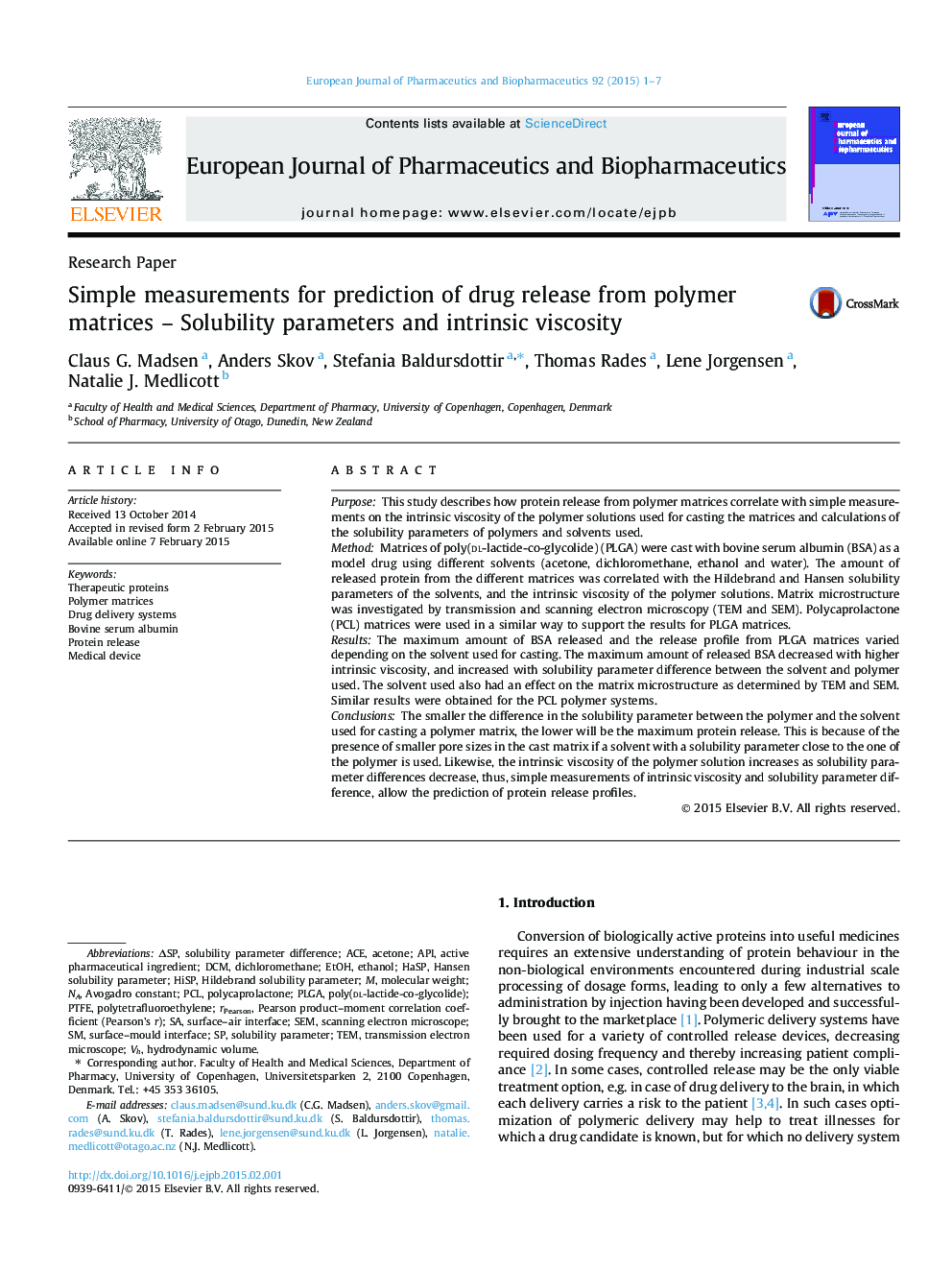| کد مقاله | کد نشریه | سال انتشار | مقاله انگلیسی | نسخه تمام متن |
|---|---|---|---|---|
| 2083329 | 1545333 | 2015 | 7 صفحه PDF | دانلود رایگان |

• Protein release from a cast polymer film can be influenced by the initial conditions.
• Protein release was correlated to the intrinsic viscosity of the polymer solution.
• The correlation is caused by a change in the microstructure of the cast polymer.
• Hildebrand and Hansen solubility parameters can be used as predictive tools.
• Individual Hansen solubility parameter values are of importance in such predictions.
PurposeThis study describes how protein release from polymer matrices correlate with simple measurements on the intrinsic viscosity of the polymer solutions used for casting the matrices and calculations of the solubility parameters of polymers and solvents used.MethodMatrices of poly(dl-lactide-co-glycolide) (PLGA) were cast with bovine serum albumin (BSA) as a model drug using different solvents (acetone, dichloromethane, ethanol and water). The amount of released protein from the different matrices was correlated with the Hildebrand and Hansen solubility parameters of the solvents, and the intrinsic viscosity of the polymer solutions. Matrix microstructure was investigated by transmission and scanning electron microscopy (TEM and SEM). Polycaprolactone (PCL) matrices were used in a similar way to support the results for PLGA matrices.ResultsThe maximum amount of BSA released and the release profile from PLGA matrices varied depending on the solvent used for casting. The maximum amount of released BSA decreased with higher intrinsic viscosity, and increased with solubility parameter difference between the solvent and polymer used. The solvent used also had an effect on the matrix microstructure as determined by TEM and SEM. Similar results were obtained for the PCL polymer systems.ConclusionsThe smaller the difference in the solubility parameter between the polymer and the solvent used for casting a polymer matrix, the lower will be the maximum protein release. This is because of the presence of smaller pore sizes in the cast matrix if a solvent with a solubility parameter close to the one of the polymer is used. Likewise, the intrinsic viscosity of the polymer solution increases as solubility parameter differences decrease, thus, simple measurements of intrinsic viscosity and solubility parameter difference, allow the prediction of protein release profiles.
Figure optionsDownload high-quality image (248 K)Download as PowerPoint slide
Journal: European Journal of Pharmaceutics and Biopharmaceutics - Volume 92, May 2015, Pages 1–7